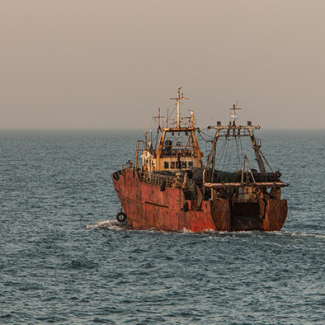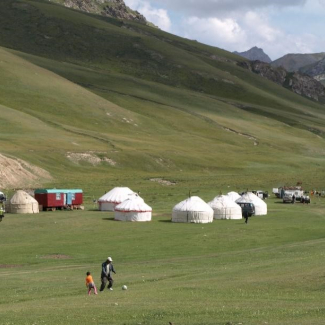
Traces of Roman-era pollution stored in the ice of Mont Blanc
The deepest layers of carbon-14 dated ice found in the Col du Dôme of the Mont Blanc glacier in the French Alps provide a record of atmospheric conditions in the ancient Roman era. Published in Geophysical Research Letters, the study, led by an international team and coordinated by a CNRS scientist at the Institute for Geosciences and Environmental Research (IGE)(CNRS/IRD/UGA/Grenoble INP)1 , reveals significant atmospheric pollution from heavy metals: the presence of lead and antimony (detected in ancient alpine ice for the first time here) is linked to mining activity and lead and silver production by the ancient Romans, well before the industrial age, in fact.
Though less well dated than in Greenland, the Alpine record traces the major periods of prosperity in Roman antiquity (see figure 1), with two very distinct peaks in lead emissions noted during the Republican period (between 350 and 100 B.C.) and Imperial period (between 0 and 200 A.D.) Romans extracted lead ore (containing silver) to produce the lead needed to make plumbing and silver for coins. The silver was extracted from the lead by heating the ore to a temperature of 1200°C, releasing significant amounts of lead into the atmosphere. While this was already documented in continental peat records, obtaining global data at the European level was difficult. This first-ever study of Ancient-era pollution using Alpine ice provides better insight into the impact of these ancient emissions on the present-day environment in Europe, as well as a comparison with more recent pollution linked to the use of lead petrol between 1950 and 1985.
This research received support from the CNRS, ADEME and the European Alpclim and Carbosol projects.


- 1This laboratory is part of the Observatoire de sciences of the Université de Grenoble.
Lead and antimony in basal ice from Col du Dome (French 1 Alps) dated with radiocarbon: A record of pollution during Antiquity Susanne Preunkert, Joseph R. McConnell, Helene Hoffmann, Michel Legrand, Andrew Wilson, Sabine Eckhardt, Andreas Stoh, Nathan Chellman, Monica Arienzo and Ronny Friedrich, Geophysical Research Letters, 7 May 2019. https://doi.org/10.1029/2019GL082641


